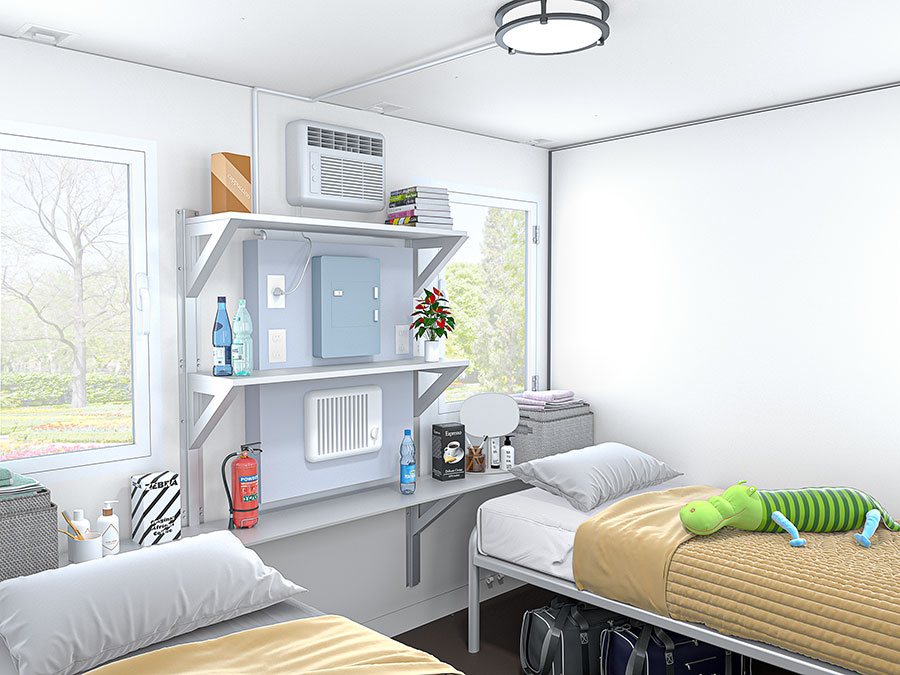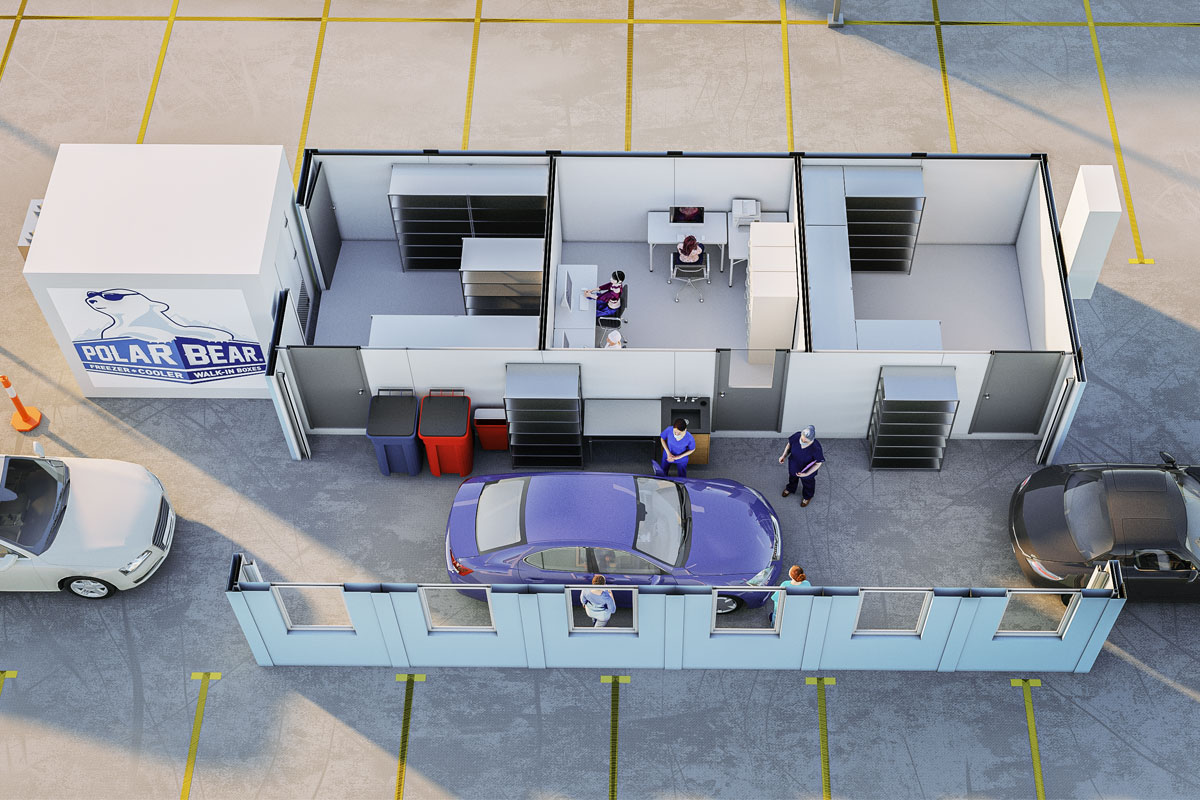From Temporary to Permanent: How Uplift Modular Units Adapt to Long-Term Housing Needs
From Temporary to Permanent: How Uplift Modular Units Adapt to Long-Term Housing Needs
In the wake of natural disasters and other emergencies, Uplift has your rapid, reliable shelter solutions.
Thanks for stopping by!
While you are here, check out all of our great products

Introduction
When disasters strike or emergencies arise, finding safe and secure housing for those affected is a top priority. Traditionally, temporary shelters like tents or basic huts have been used to provide immediate relief. However, these options are often inadequate for long-term use due to their lack of durability, comfort, and adaptability. Uplift Shelters is changing the game with its modular units, which are designed to start as temporary solutions but can easily transition into permanent housing. This blog will explore how Uplift’s modular units are revolutionizing the way we think about emergency housing, providing flexible and sustainable living solutions that can evolve over time.
Understanding Modular Housing
What Are Modular Units?
Modular units are prefabricated buildings that are constructed off-site in a factory setting and then transported to their final location for assembly. These units are made up of individual sections, or modules, that can be connected in various configurations to create a complete building. This method of construction is efficient, cost-effective, and offers a high degree of flexibility.
Imagine building a house like assembling LEGO bricks. Each brick represents a different room or section of the house. You can start with a small structure, like a single room, and then add more bricks to expand the house as needed. This is the basic idea behind modular housing.
Temporary vs. Permanent Housing
Temporary housing is designed to provide short-term accommodation for people who have been displaced due to natural disasters, conflicts, or other emergencies. These shelters are typically quick to set up and are meant to last for a few weeks or months.
Permanent housing, on the other hand, is built to last for many years. It is designed to provide long-term comfort, safety, and stability. Permanent homes are usually more durable, with better insulation, plumbing, and electrical systems compared to temporary shelters.
The unique advantage of Uplift’s modular units is that they can serve as both temporary and permanent housing. They are built to be durable and can be easily upgraded or expanded, making them suitable for long-term use.

UPLIFT™ Shelters – Award winning innovative instant shelter solutions and portable home technologies
The Benefits of Uplift’s Modular Units
Speed and Efficiency
One of the biggest advantages of modular construction is the speed with which it can be completed. Since the units are built in a factory, they can be constructed simultaneously with site preparation, cutting down on the overall construction time. Once the modules are ready, they are transported to the site and assembled quickly, sometimes in just a few days.
For example, after a natural disaster, people need shelter immediately. Traditional construction methods could take months or even years to provide a safe place to live. However, with Uplift’s modular units, a fully functional shelter can be up and running in a fraction of the time. This rapid deployment is crucial in emergency situations where every day counts.
Flexibility and Adaptability
Modular units are incredibly flexible. They can be configured in a variety of ways to meet different needs. For instance, a single module might start as a small one-room shelter. As the needs of the occupants change, additional modules can be added to create more space. These units can be stacked, arranged side by side, or connected with walkways to create larger living spaces. Adding an Uplift Kitchen, Uplift Bathroom, Uplift Dormitory, Uplift Office, or any other Uplift unit, is easily adapted to your existing units.
This adaptability is particularly important in situations where the number of occupants might increase over time, such as in a growing family or community. Uplift’s modular units can easily expand to accommodate these changes without the need for a complete rebuild.
Durability and Quality
Despite being designed for quick assembly, Uplift’s modular units are built to last. They are constructed using high-quality materials that are resistant to weather, pests, and other environmental factors. This means that even though a unit might start as temporary housing, it can endure the test of time and serve as a permanent home.
In addition to durability, the quality of life inside a modular unit is also high. These units are well-insulated, keeping the interior comfortable in both hot and cold weather. They also include essential features like plumbing, electricity, and proper ventilation, ensuring that occupants have access to modern amenities.
Cost-Effectiveness
Building a traditional home from the ground up can be expensive, especially in areas where resources are limited. Uplift’s modular units offer a more affordable alternative without compromising on quality. Because they are mass-produced in a factory, the cost of materials and labor is lower than traditional construction methods. These savings are passed on to the end user, making modular housing an attractive option for those in need of affordable, long-term housing.
Additionally, the ability to start with a smaller, less expensive unit and expand as needed means that families and communities can invest in housing incrementally, without the burden of large upfront costs.
Sustainability
Sustainability is a key concern in modern construction, and Uplift’s modular units are designed with the environment in mind. The factory construction process minimizes waste, as materials are used more efficiently and excess materials can be recycled. Additionally, because the units are built in a controlled environment, there is less risk of damage from weather, which further reduces waste.
Uplift also offers eco-friendly options, such as solar panels, rainwater collection systems, and energy-efficient appliances. These features not only reduce the environmental impact of the units but also lower utility costs for occupants.

UPLIFT™ Shelters – Award winning innovative instant shelter solutions and portable home technologies
Real-World Applications
Disaster Relief
One of the most common applications for Uplift’s modular units is in disaster relief. When natural disasters like hurricanes, earthquakes, or floods strike, thousands of people can be left homeless in a matter of hours. Providing immediate shelter is critical, but these temporary solutions often need to be replaced with more permanent housing as the recovery process continues.
Uplift’s modular units offer a seamless transition from temporary to permanent housing. Initially, they can be deployed as emergency shelters, providing safe and secure accommodation within days of a disaster. As the recovery process progresses, these units can be expanded, upgraded, and even relocated to serve as long-term housing solutions. This flexibility ensures that no resources are wasted and that displaced individuals can quickly move from crisis to stability.
For example, after an earthquake, a family might be given a small modular unit to live in temporarily. Over time, as the area is rebuilt, additional modules can be added to the original unit, creating a permanent home with multiple rooms, a kitchen, and a bathroom.
Affordable Housing
The global affordable housing crisis has left millions of people without access to safe and secure homes. Traditional construction methods are often too slow and expensive to meet the growing demand. Uplift’s modular units provide a practical solution to this problem by offering affordable, high-quality housing that can be deployed quickly and expanded over time.
Governments and non-profit organizations can use Uplift’s modular units to create entire communities of affordable housing. These units can be configured to include not just individual homes, but also community centers, schools, and healthcare facilities, creating a self-sustaining neighborhood.
For instance, in a low-income urban area, a modular housing project might start with a few basic units to house families in need. As funding and resources become available, the project can expand, adding more units and community amenities, eventually transforming the area into a thriving, permanent community.
Remote and Off-Grid Living
In remote areas, traditional construction can be challenging due to the lack of infrastructure and resources. Uplift’s modular units are an ideal solution for these environments, as they can be transported to the site and assembled with minimal equipment. Additionally, the units can be equipped with off-grid features like solar panels and water purification systems, making them self-sufficient and sustainable.
This makes Uplift’s modular units perfect for remote work camps, research stations, or even eco-friendly vacation homes. For example, a research team working in a remote jungle might use modular units as their base of operations. These units would provide all the necessary amenities while being sustainable and easy to move as the team’s needs change.
Military and Humanitarian Use
The various military and humanitarian organizations across the world often require temporary bases or field hospitals in challenging environments. Uplift’s modular units are well-suited to these applications, as they can be quickly deployed and configured to meet a variety of needs, from housing to medical facilities.
For example, during a humanitarian crisis in a conflict zone, modular units could be used to create a temporary field hospital. As the situation stabilizes, these units could be repurposed into long-term medical facilities or housing for displaced persons.

UPLIFT™ Shelters – Award winning innovative instant shelter solutions and portable home technologies
Case Study: A Real-Life Example
To illustrate the power of Uplift’s modular units, let’s consider a real-life example. After a major flood in a Southeast Asian country, thousands of people were left homeless. The government and international aid organizations needed to provide shelter quickly, but they also knew that many of the displaced individuals would not be able to return to their homes for a long time, if ever.
Uplift Shelters was brought in to provide a solution. Within days, the first modular units were being assembled on-site. These initial units were basic shelters designed to provide immediate relief. However, as the floodwaters receded and the recovery process began, Uplift worked with local officials to expand these units into permanent homes.
New modules were added, including kitchens, bathrooms, and additional living spaces. The units were also equipped with solar panels and water filtration systems, making them self-sufficient and reducing the burden on local infrastructure. What started as a temporary solution quickly became a new, permanent community, with homes that were safe, comfortable, and environmentally sustainable.
Conclusion
Uplift’s modular units represent a new paradigm in housing—one that is flexible, durable, and adaptable to both temporary and permanent needs. Whether in the aftermath of a disaster, in response to the affordable housing crisis, or in remote and challenging environments, these units offer a practical solution that can evolve over time.
By starting with a basic module and expanding as needs change, Uplift’s modular units provide a seamless transition from temporary to permanent housing. This adaptability ensures that resources are used efficiently, reducing waste and costs while providing safe, comfortable, and sustainable homes for those in need. As we face an increasingly uncertain world with more frequent natural disasters and growing housing demands, Uplift’s modular solutions offer hope and stability, transforming the way we approach housing for the better. With Uplift Shelters, the journey from temporary relief to long-term resilience has never been more accessible or impactful so contact us today to get started with Uplift.
